
How to Use Adafruit I2S Mic breakout (SPH0645): Examples, Pinouts, and Specs
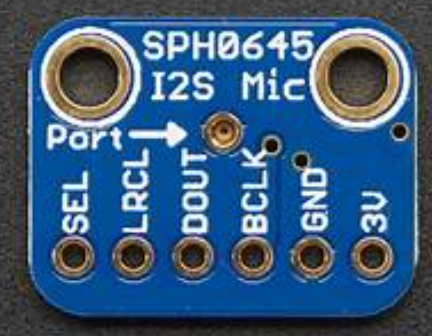
 Design with Adafruit I2S Mic breakout (SPH0645) in Cirkit Designer
Design with Adafruit I2S Mic breakout (SPH0645) in Cirkit DesignerAdafruit I2S Microphone Breakout (SPH0645) Documentation
1. Introduction
The Adafruit I2S Microphone Breakout (SPH0645) is a compact, high-performance digital microphone module designed for capturing high-quality audio. It utilizes the I2S (Inter-IC Sound) interface for transmitting audio data, making it an excellent choice for projects requiring precise sound capture and processing. Unlike analog microphones, the SPH0645 outputs digital audio signals, eliminating the need for analog-to-digital conversion and reducing noise interference.
Common Applications
- Voice recognition systems
- Audio recording and streaming
- Sound level monitoring
- IoT devices with audio input
- DIY smart assistants and home automation
2. Technical Specifications
The following table outlines the key technical details of the Adafruit I2S Microphone Breakout:
| Parameter | Value |
|---|---|
| Microphone Type | Digital MEMS (SPH0645LM4H-B) |
| Interface | I2S (Inter-IC Sound) |
| Supply Voltage | 1.8V to 3.3V |
| Current Consumption | ~1.4 mA |
| Frequency Response | 50 Hz to 15 kHz |
| Signal-to-Noise Ratio | 65 dB |
| Sensitivity | -26 dBFS ±3 dB |
| Dimensions | 15.2mm x 17.7mm x 1.5mm |
Pin Configuration and Descriptions
The breakout board has four pins, as described in the table below:
| Pin | Name | Description |
|---|---|---|
| 1 | VIN | Power supply input (1.8V to 3.3V). Connect to 3.3V for most microcontrollers. |
| 2 | GND | Ground. Connect to the ground of your circuit. |
| 3 | BCLK | Bit Clock. Provides the clock signal for I2S communication. |
| 4 | DOUT | Data Output. Outputs the digital audio data in I2S format. |
| 5 | LRCLK | Left/Right Clock. Determines whether the data is for the left or right channel. |
3. Usage Instructions
Connecting the SPH0645 to a Microcontroller
The SPH0645 is designed to work seamlessly with microcontrollers like the Arduino UNO, ESP32, or Raspberry Pi. Below is a typical wiring guide for connecting the SPH0645 to an Arduino UNO:
| SPH0645 Pin | Arduino Pin |
|---|---|
| VIN | 3.3V |
| GND | GND |
| BCLK | Pin 3 |
| LRCLK | Pin 2 |
| DOUT | Pin 4 |
Note: The Arduino UNO does not natively support I2S. For I2S functionality, use a microcontroller like the ESP32 or Raspberry Pi.
Example Code for ESP32
The following example demonstrates how to use the SPH0645 with an ESP32 to capture audio data:
#include <I2S.h> // Include the I2S library for ESP32
// Define I2S pins
#define I2S_BCLK 3 // Bit Clock pin
#define I2S_LRCLK 2 // Left/Right Clock pin
#define I2S_DOUT 4 // Data Output pin
void setup() {
Serial.begin(115200); // Initialize serial communication for debugging
// Configure I2S with the appropriate pins and settings
if (!I2S.begin(I2S_PHILIPS_MODE, 16000, 16)) {
Serial.println("Failed to initialize I2S!");
while (1); // Halt execution if I2S initialization fails
}
I2S.setPins(I2S_BCLK, I2S_LRCLK, I2S_DOUT);
Serial.println("I2S Microphone Initialized!");
}
void loop() {
int16_t sampleBuffer[256]; // Buffer to store audio samples
size_t bytesRead = I2S.read(sampleBuffer, sizeof(sampleBuffer));
if (bytesRead > 0) {
Serial.print("Audio data captured: ");
Serial.println(bytesRead / 2); // Each sample is 2 bytes
}
delay(100); // Small delay to avoid overwhelming the serial monitor
}
Important Considerations
- Power Supply: Ensure the SPH0645 is powered with 3.3V. Supplying higher voltages may damage the module.
- I2S Compatibility: Verify that your microcontroller supports I2S communication. The Arduino UNO does not natively support I2S.
- Clock Signals: The SPH0645 requires both BCLK and LRCLK signals to function correctly. Ensure these are configured properly in your code.
4. Troubleshooting and FAQs
Common Issues and Solutions
| Issue | Possible Cause | Solution |
|---|---|---|
| No audio data is being captured. | Incorrect wiring or pin configuration. | Double-check the wiring and ensure the pins are connected as per the table. |
| Distorted or noisy audio output. | Incorrect I2S settings (e.g., sample rate). | Verify the I2S configuration in your code matches the SPH0645 specifications. |
| Microphone not initializing. | Incompatible microcontroller. | Use a microcontroller with native I2S support, such as ESP32 or Raspberry Pi. |
| Module overheating. | Overvoltage on VIN pin. | Ensure the VIN pin is supplied with 3.3V (not 5V). |
Frequently Asked Questions
Q1: Can I use the SPH0645 with an Arduino UNO?
A1: The Arduino UNO does not natively support I2S. Use an ESP32, Raspberry Pi, or other microcontrollers with I2S support.
Q2: What is the maximum sample rate supported by the SPH0645?
A2: The SPH0645 supports sample rates up to 48 kHz, but 16 kHz is commonly used for most applications.
Q3: Can I use multiple SPH0645 modules in a single project?
A3: Yes, but each module will require its own I2S interface or multiplexing to handle the data streams.
Q4: How do I process the audio data captured by the SPH0645?
A4: The audio data is output as 16-bit PCM. You can process it using audio libraries or send it to external devices for further analysis.
5. Additional Resources
This documentation provides a comprehensive guide to using the Adafruit I2S Microphone Breakout (SPH0645). Whether you're a beginner or an experienced developer, this guide will help you integrate the SPH0645 into your next audio project with ease.
Explore Projects Built with Adafruit I2S Mic breakout (SPH0645)
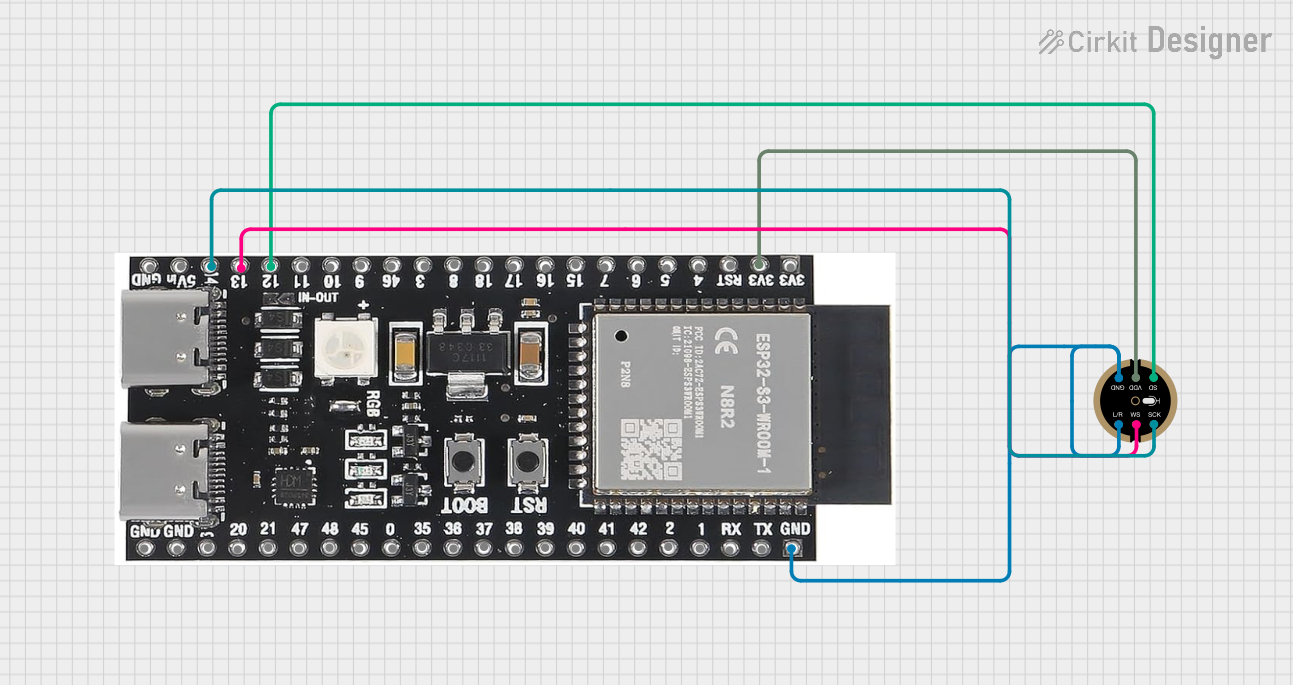
 Open Project in Cirkit Designer
Open Project in Cirkit Designer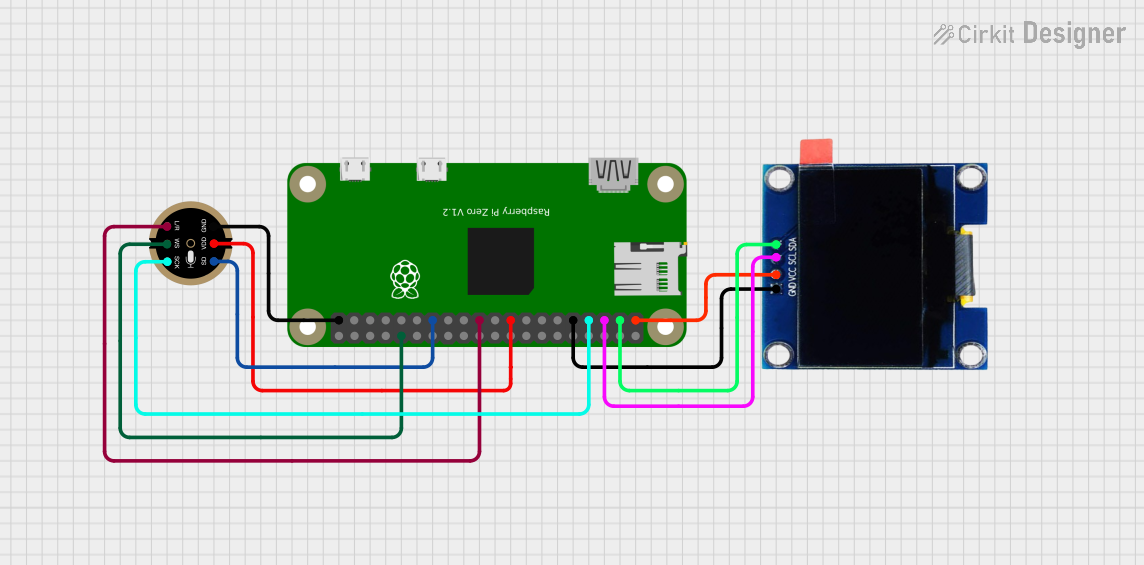
 Open Project in Cirkit Designer
Open Project in Cirkit Designer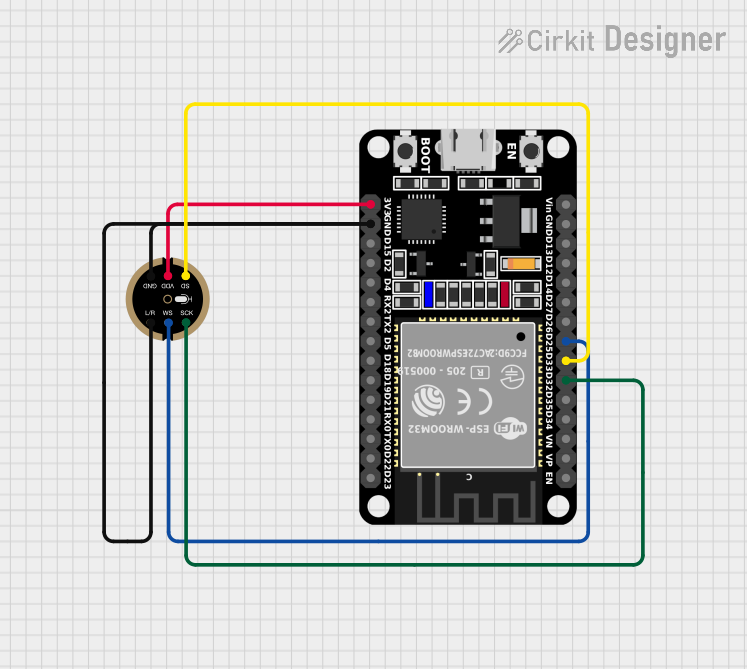
 Open Project in Cirkit Designer
Open Project in Cirkit Designer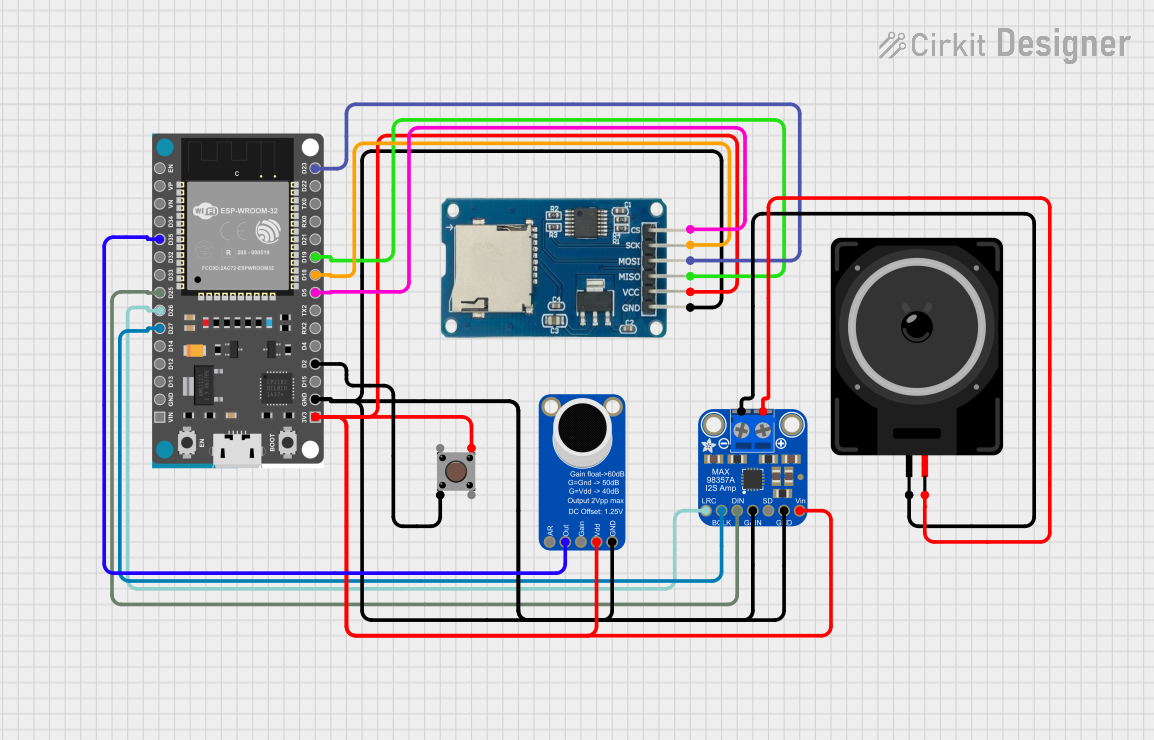
 Open Project in Cirkit Designer
Open Project in Cirkit DesignerExplore Projects Built with Adafruit I2S Mic breakout (SPH0645)

 Open Project in Cirkit Designer
Open Project in Cirkit Designer
 Open Project in Cirkit Designer
Open Project in Cirkit Designer
 Open Project in Cirkit Designer
Open Project in Cirkit Designer
 Open Project in Cirkit Designer
Open Project in Cirkit Designer